Abstract
Nine subjects, 14 to 18 yr old, pulled a knob on a schedule of monetary reinforcement. Concurrently, they escaped or avoided periodic presentations of a tone by pressing a button that required 1.5 lb (6.67 N) of force or by punching a padded cushion that required 20 lb (88.96 N) of force. The punching response was designated as an aggressive response because the force of this response together with its topography was comparable to responses of humans that deface objects and produce escape or counter aggression from other humans. It was found that button pressing was the preferred concurrent avoidance response and there were few punches. However, when the monetary reinforcer was discontinued (extinction) punching increased for seven of the nine subjects, but there was no consistent change in the rate of button pressing. When the punching response was replaced by another non-preferred but non-aggressive response, neither this response nor button pressing increased during extinction. Hence, the increase in punching during extinction cannot be attributed solely to the fact that it was a concurrent response or a non-preferred response.
Full text
PDF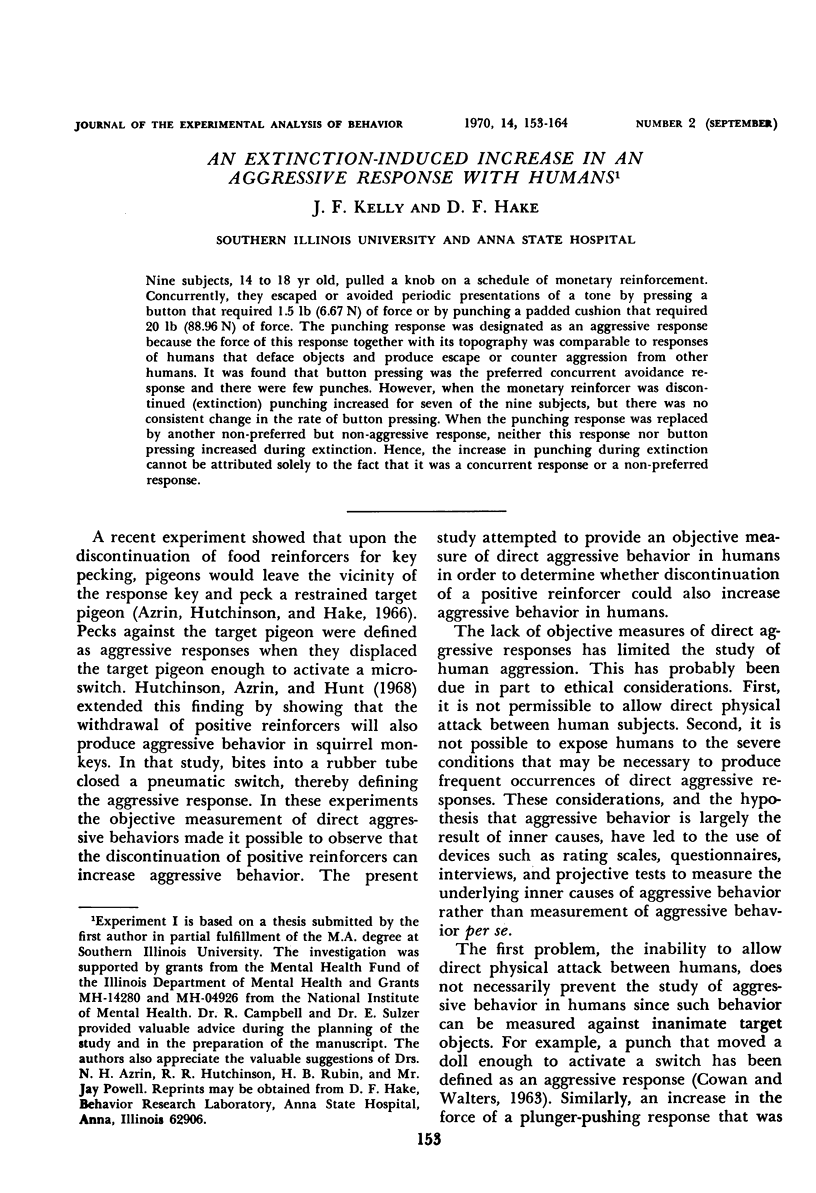
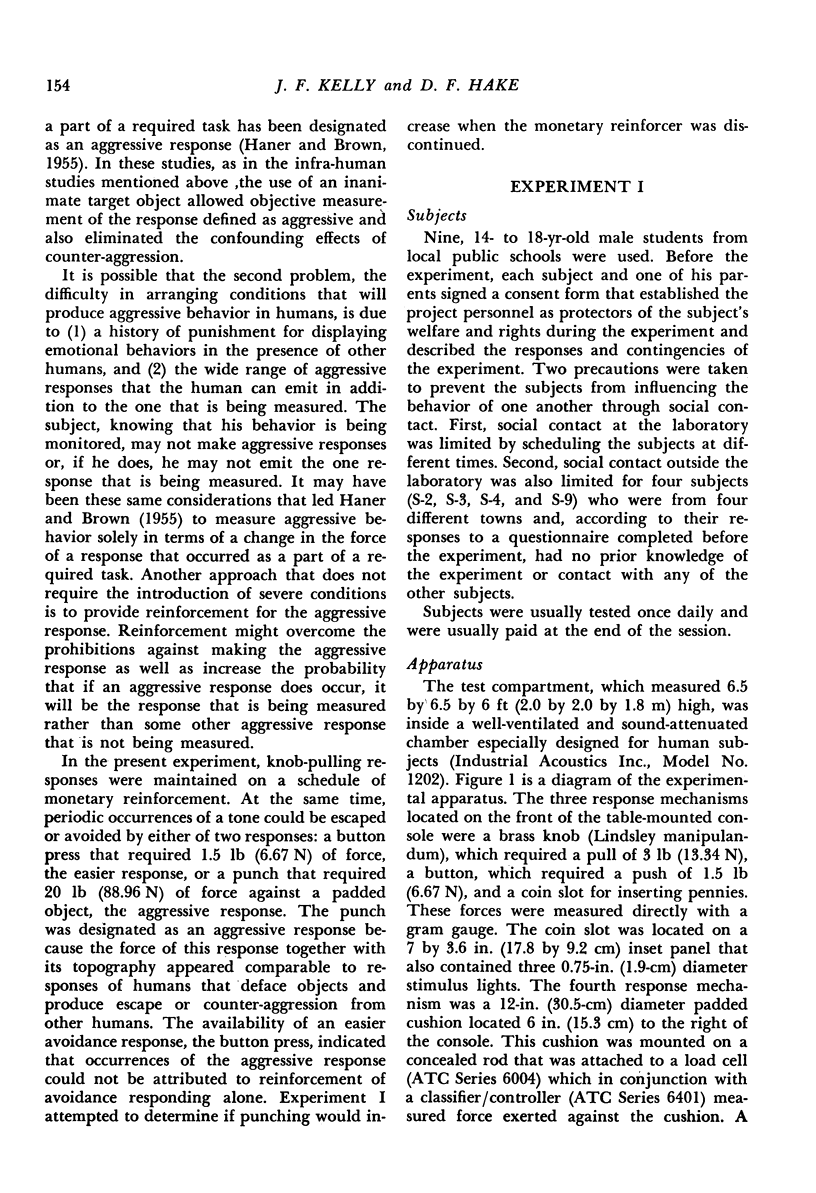
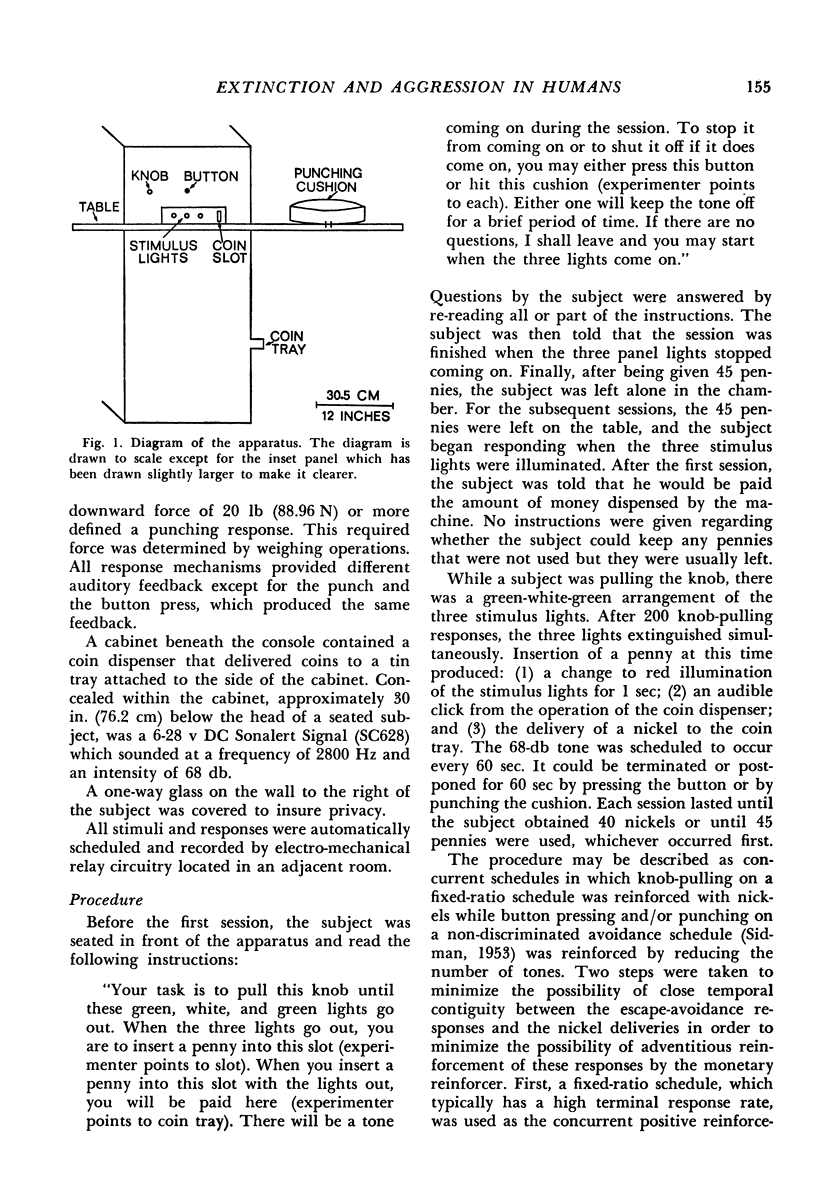
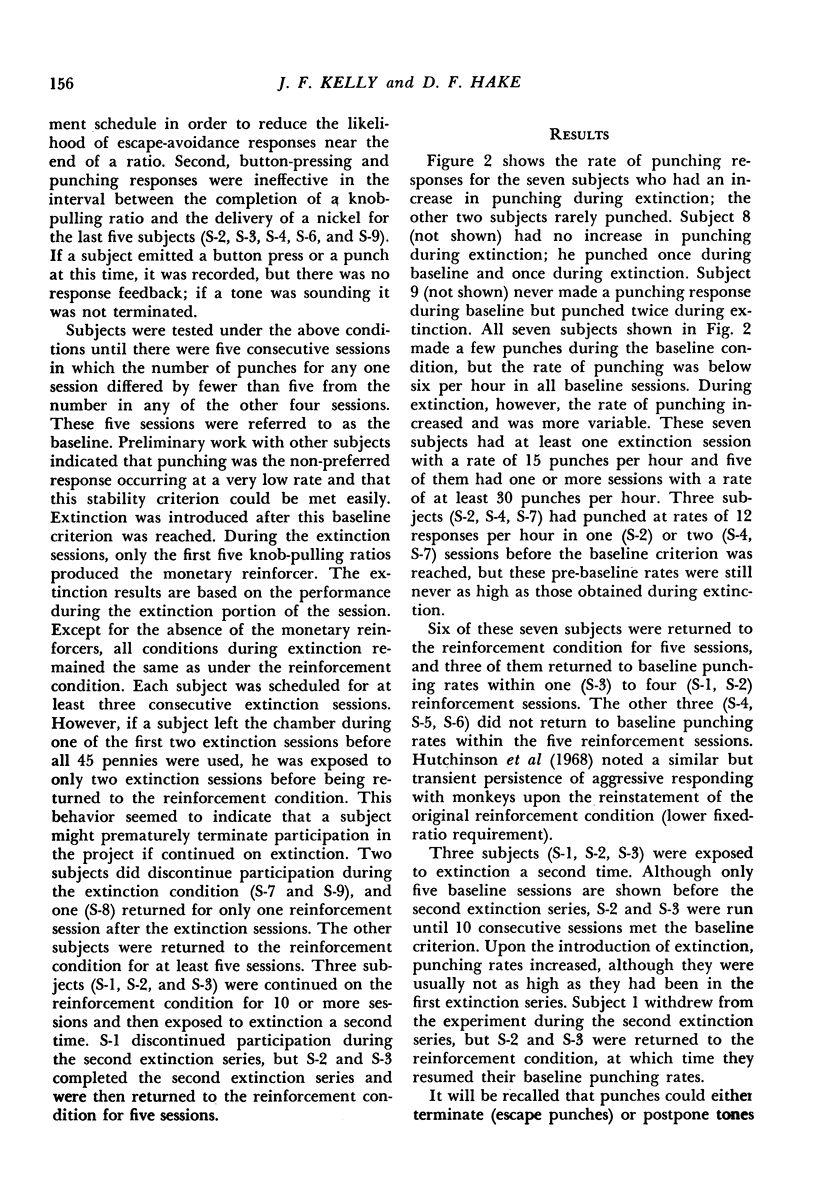
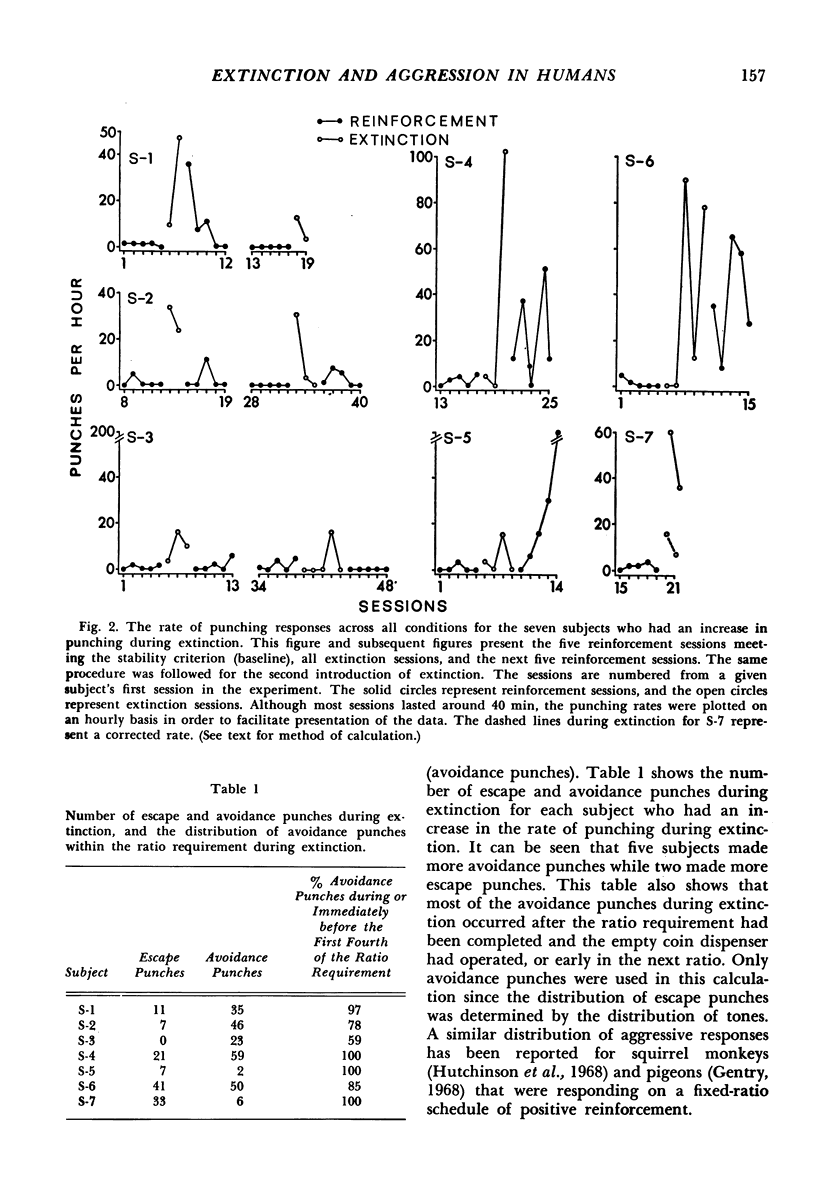


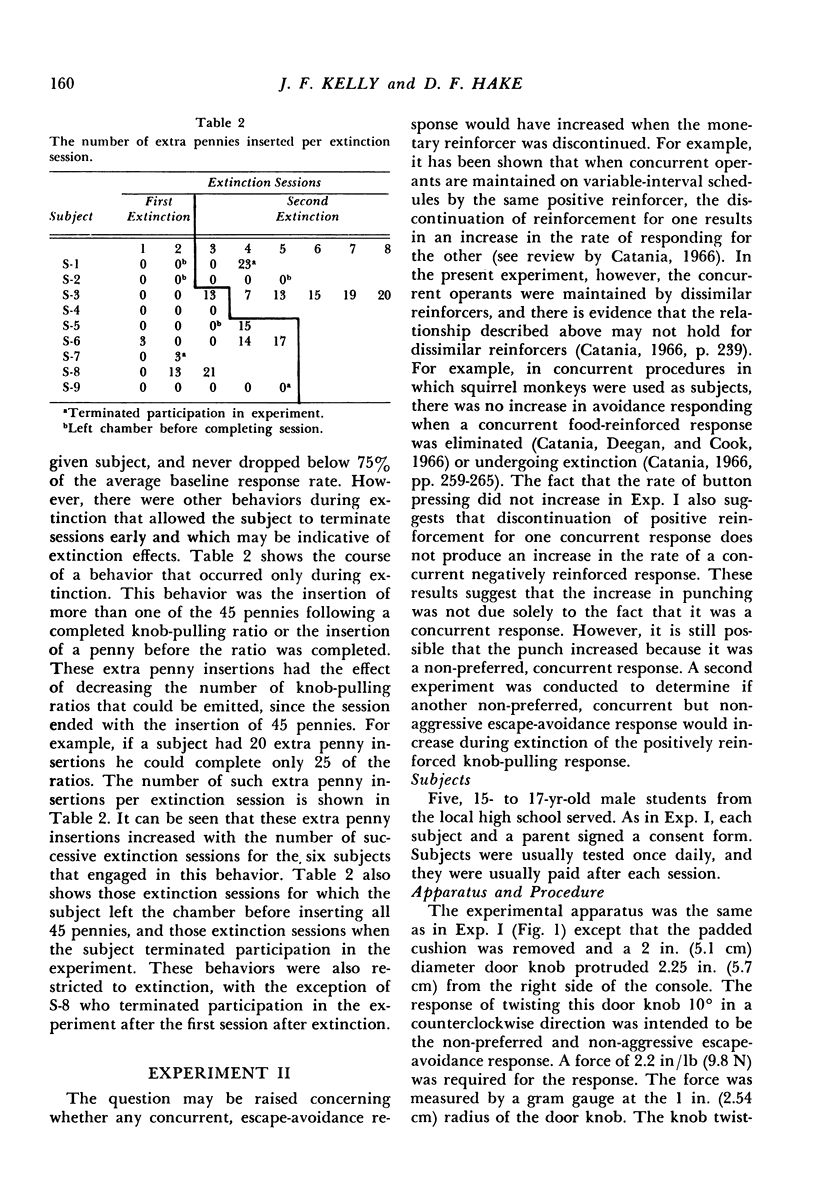
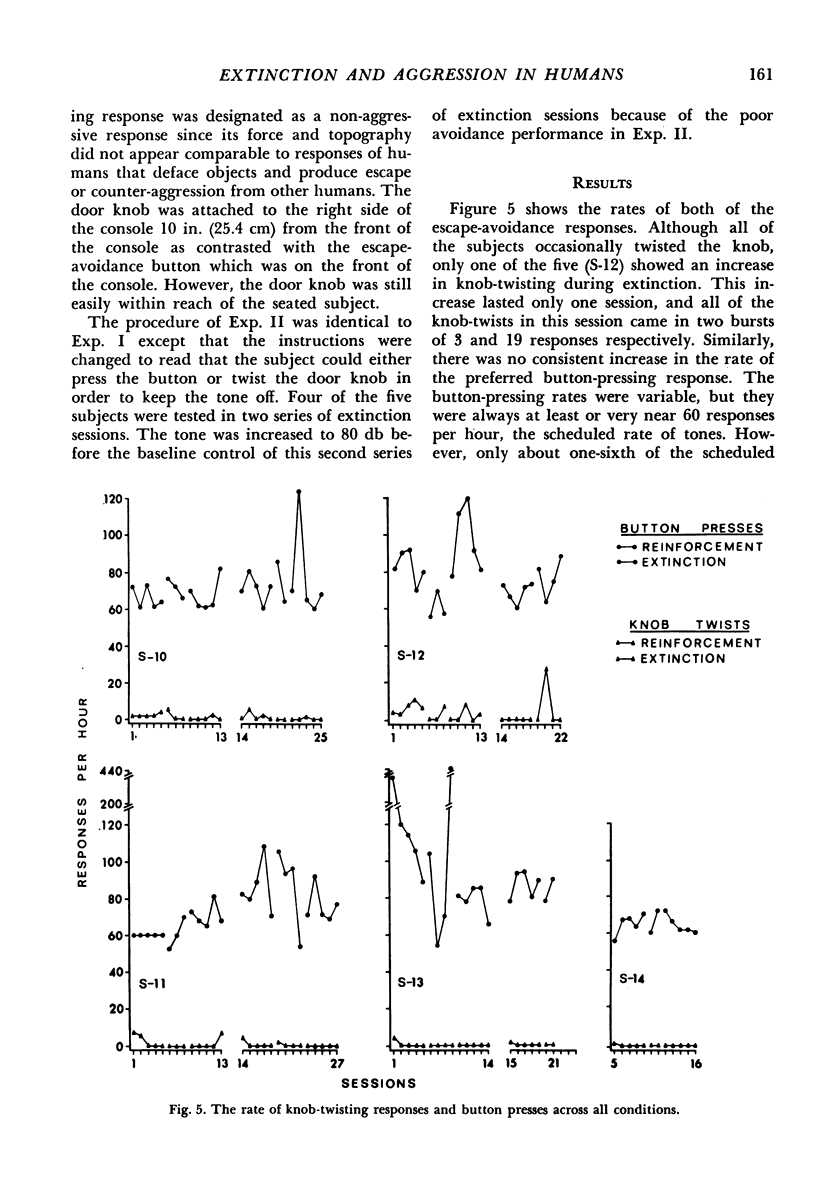
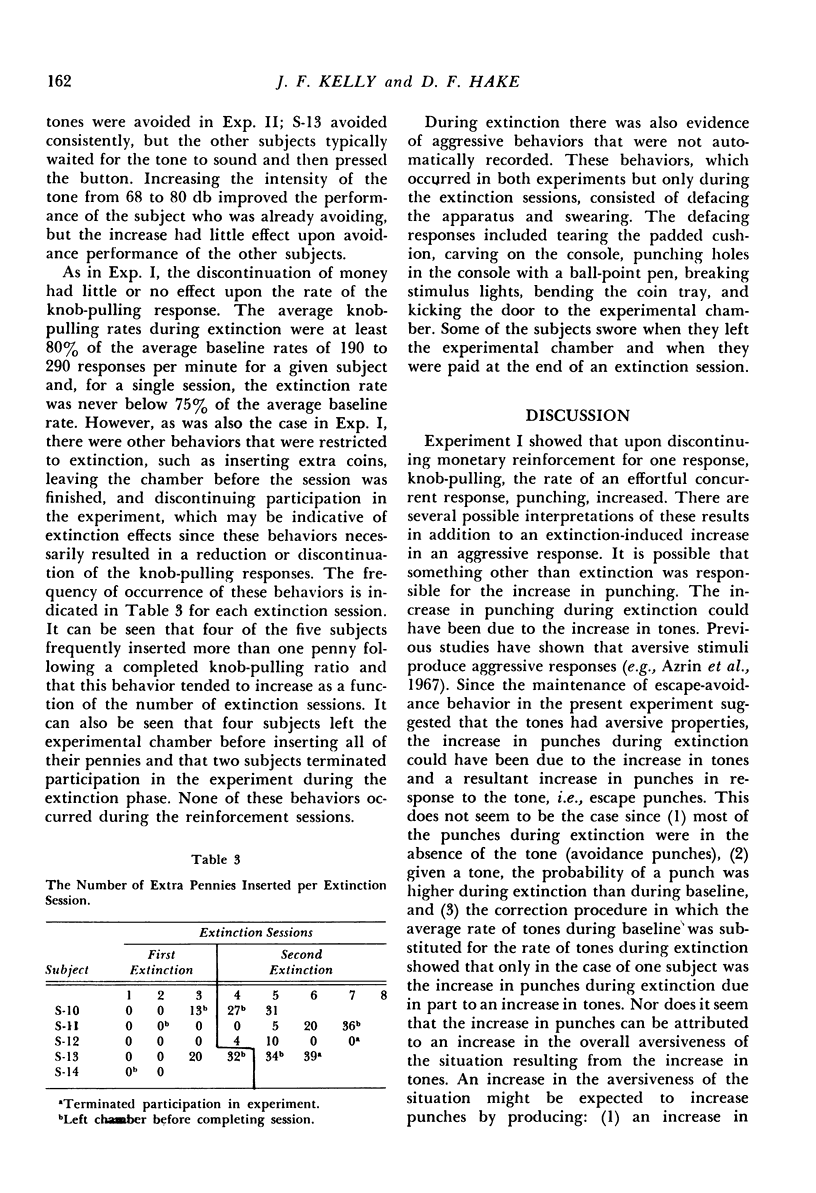
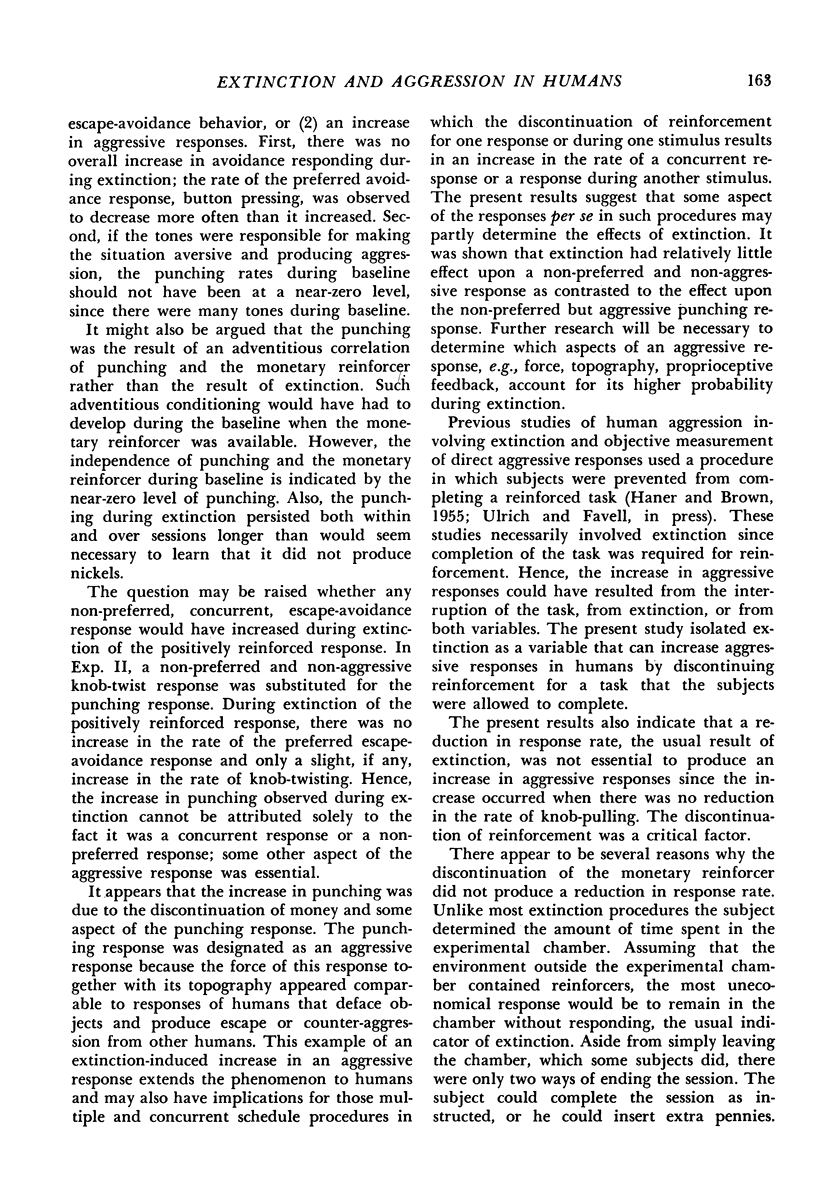

Selected References
These references are in PubMed. This may not be the complete list of references from this article.
- Azrin N. H., Hutchinson R. R., Hake D. F. Attack, avoidance, and escape reactions to aversive shock. J Exp Anal Behav. 1967 Mar;10(2):131–148. doi: 10.1901/jeab.1967.10-131. [DOI] [PMC free article] [PubMed] [Google Scholar]
- Azrin N. H., Hutchinson R. R., Hake D. F. Extinction-induced aggression. J Exp Anal Behav. 1966 May;9(3):191–204. doi: 10.1901/jeab.1966.9-191. [DOI] [PMC free article] [PubMed] [Google Scholar]
- COWAN P. A., WALTERS R. H. Studies of reinforcement of aggression. I. Effects of scheduling. Child Dev. 1963 Sep;34:543–551. doi: 10.1111/j.1467-8624.1963.tb05158.x. [DOI] [PubMed] [Google Scholar]
- Catania A. C., Deegan J. F., Cook L. Concurrent fixed-ratio and avoidance responding in the squirrel monkey. J Exp Anal Behav. 1966 May;9(3):227–231. doi: 10.1901/jeab.1966.9-227. [DOI] [PMC free article] [PubMed] [Google Scholar]
- Gentry W. D. Fixed-ratio schedule-induced aggression. J Exp Anal Behav. 1968 Nov;11(6):813–817. doi: 10.1901/jeab.1968.11-813. [DOI] [PMC free article] [PubMed] [Google Scholar]
- HANER C. F., BROWN P. A. Clarification of the instigation to action concept in the frustration-aggression hypothesis. J Abnorm Psychol. 1955 Sep;51(2):204–206. doi: 10.1037/h0044818. [DOI] [PubMed] [Google Scholar]
- Hutchinson R. R., Azrin N. H., Hunt G. M. Attack produced by intermittent reinforcement of a concurrent operant response. J Exp Anal Behav. 1968 Jul;11(4):489–495. doi: 10.1901/jeab.1968.11-489. [DOI] [PMC free article] [PubMed] [Google Scholar]
- SIDMAN M. Avoidance conditioning with brief shock and no exteroceptive warning signal. Science. 1953 Aug 7;118(3058):157–158. doi: 10.1126/science.118.3058.157. [DOI] [PubMed] [Google Scholar]


